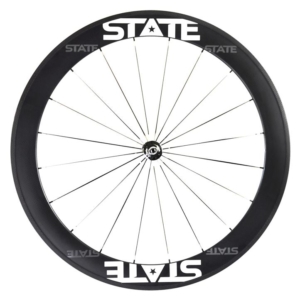Difference Between Tubulars and Clinchers
We highlight the pros and cons of tubulars and clinchers
If you’re relatively new to triathlon then you’ve probably noticed many new terms, like tubulars and clinchers. Even veteran triathletes are learning new terminology about the sport. Whether you’re new to triathlon or you’ve been racing for years, we break down the difference between tubulars and clinchers.
[bctt tweet=”Learn about the pros and cons before you decide to make any purchases, replacements, or upgrades.” username=”kerrvilletri”]
Tubulars
Tubular tires, also known as “sew-ups” or “sprints” differ from clinchers in that they don’t have beads. Instead, the two edges of the tire are sewn together around the inner tube. Tubulars are used on special rims and are held on to the rims by glue.
Clinchers
Conventional tires used on 99% of all bicycles are “clincher” type, also known as “wire-on.” They consist of an outer tire with a u-shaped cross-section and a

State Wheels Carbon Clinchers come in a variety of depths and are handmade in Austin, Texas
separate inner tube. The edges of the tire hook over the edges of the rim and air pressure holds everything in place.









